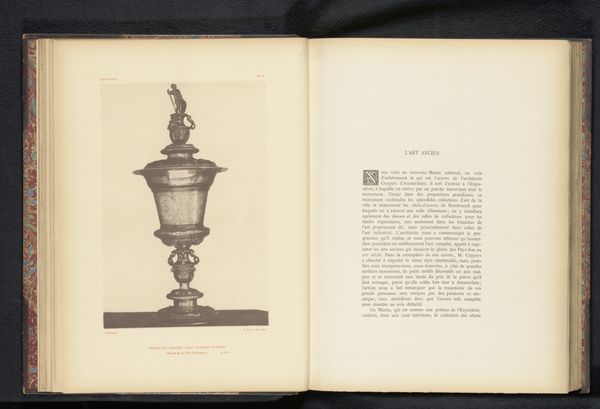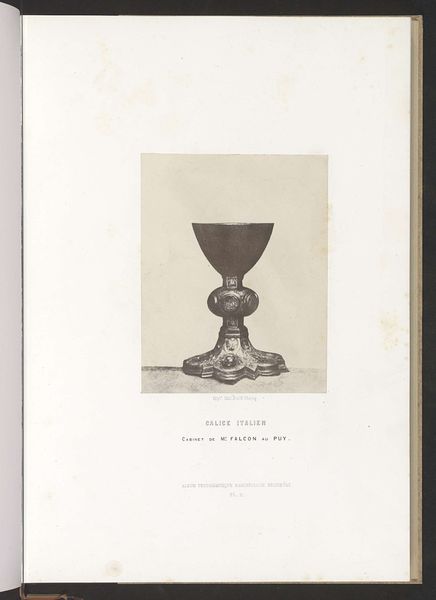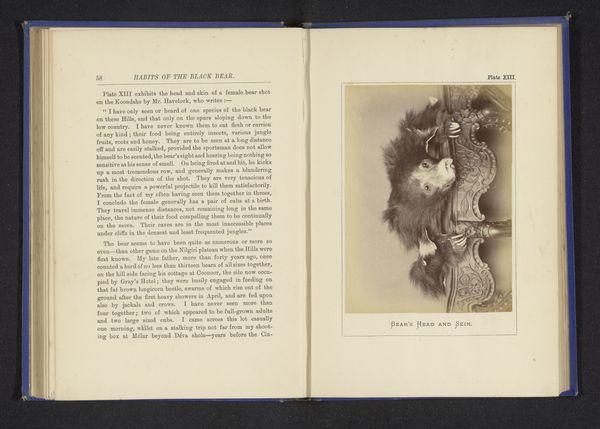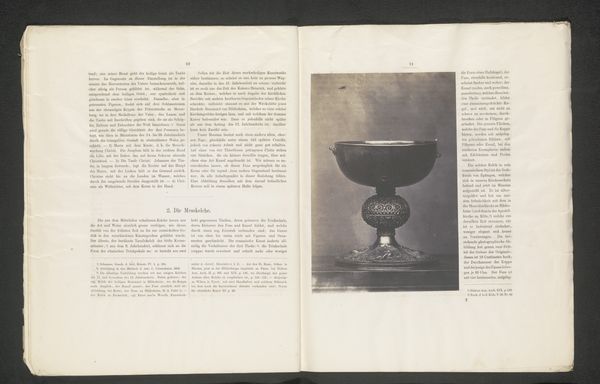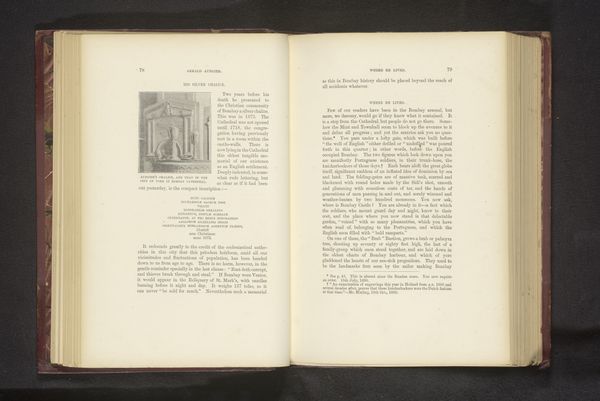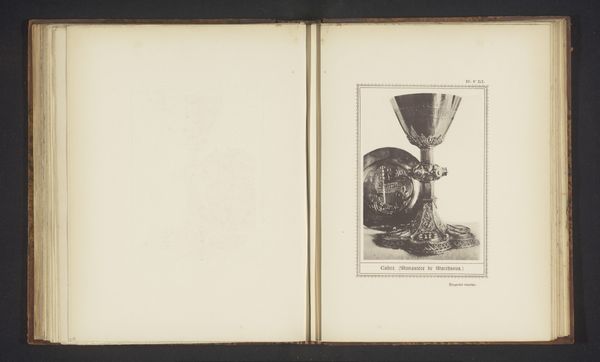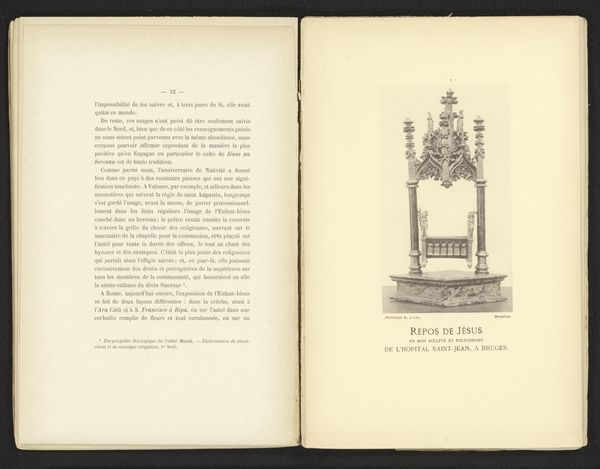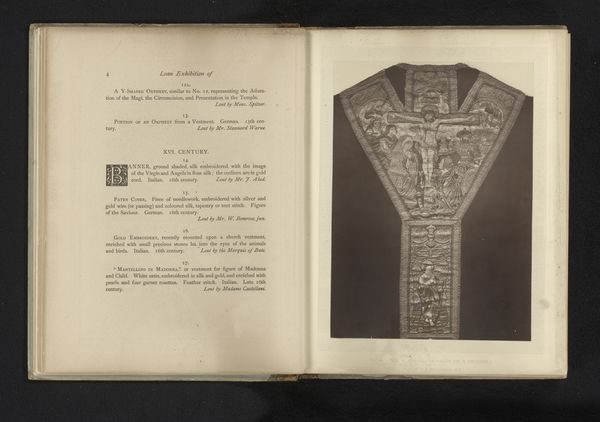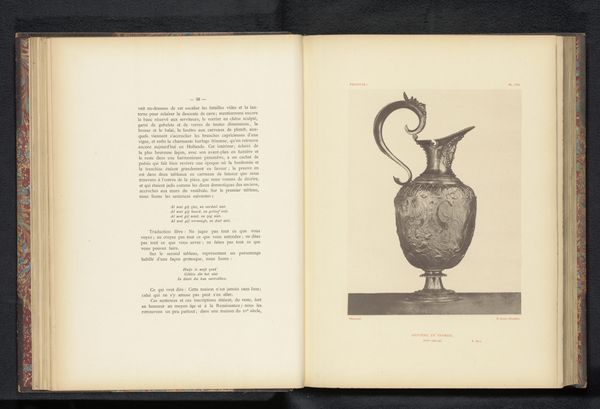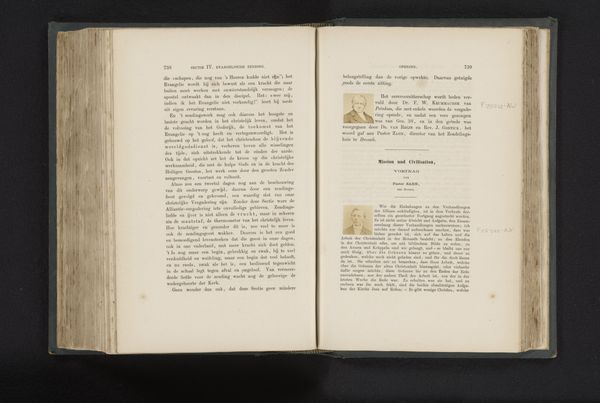
print, photography
#
dutch-golden-age
# print
#
photography
#
history-painting
Dimensions: height 166 mm, width 124 mm
Copyright: Rijks Museum: Open Domain
Curator: This image presents a photographic reproduction of a silver-gilt cup once owned by Nicolaes Tulp, a prominent figure in Amsterdam's history. The piece dates back to 1876. What strikes you about it at first glance? Editor: The first thing that grabs me is its verticality and how much it evokes a sense of elevation. The image also does a poor job rendering its materiality as I cant tell that it's really metal without being told that. Is there more detail available about what the author had in mind here? Curator: The composition certainly directs the eye upward, doesn't it? We have a slender, almost stylized figure supporting what appears to be a large tulip blossom forming the cup itself. What fascinates me is how it blends naturalistic form with obviously manufactured elements. Editor: Precisely! It prompts us to consider the skill and the sheer labor involved in crafting such an elaborate drinking vessel out of silver and then gilding it. Who would have owned or had access to such a piece in the period. It must've denoted wealth and social capital. Curator: That's key! Its materiality screams wealth and status, right? But, it is the tulip itself that strikes me. Think about the Dutch Golden Age: tulips weren’t merely flowers; they were speculative commodities. In crafting the cup in the tulip form, we get a perfect visual representation of value and what it stood for during that time. Editor: You've hit the mark on how this single piece, with its chosen form and precious materials, tells a wider social and financial history! Even in the original period, it must've felt highly self-referential. And in this late rendition, something that’s reproduced into an image from a book, do we lose its materiality? Curator: An intriguing question. Perhaps in this secondary reproduction we reflect on that shift in media from material object to printed image. It creates distance while hinting at so much lost context. Editor: Indeed, seeing the artistry embedded in each layer is deeply satisfying. It almost demands interaction!
Comments
No comments
Be the first to comment and join the conversation on the ultimate creative platform.
